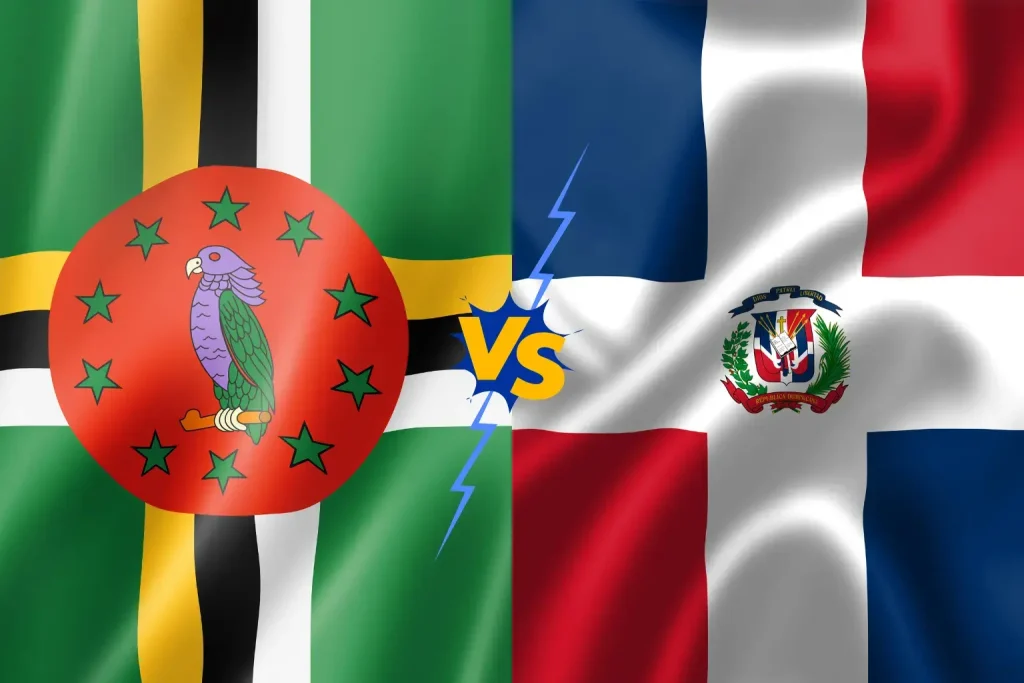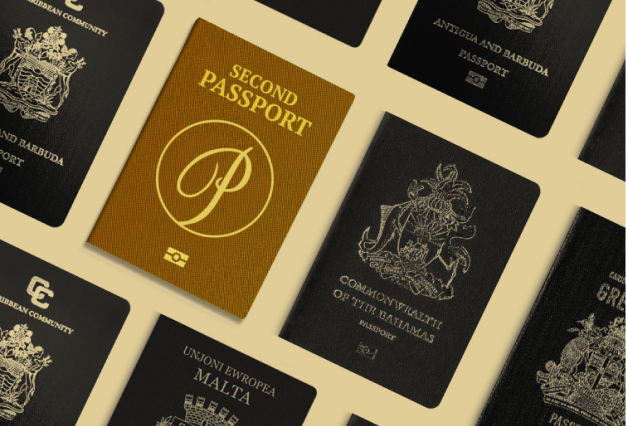Dominica vs Dominican Republic

The Caribbean region has long been a magnet for travellers and expatriates seeking tropical paradises with stunning landscapes, vibrant cultures, and a relaxed way of life. Among the many countries located in the Caribbean, Dominica and the Dominican Republic stand out as popular destinations.
This comparative guide will explore the significant differences between Dominica and the Dominican Republic to help travellers and potential expats make informed decisions.
Are Dominica and Dominican Republic the same?
Despite the similarities in their names, these two Caribbean countries are distinct entities. Dominica, officially known as the Commonwealth of Dominica, is an independent island nation situated between the French territories of Guadeloupe and Martinique. It is known for its lush rainforests, hot springs, and vibrant marine life.
On the other hand, the Dominican Republic is a larger country occupying the eastern two-thirds of the island of Hispaniola, which it shares with Haiti. The Dominican Republic is renowned for its stunning beaches, historical sites, and vibrant culture.
Dominican Republic & Dominica: Location and Geography
Both Dominica and the Dominican Republic are located in the Caribbean but on different ends of the island spectrum. Dominica lies in the Lesser Antilles region and is a small island nation between the Caribbean Sea and the Atlantic Ocean. It is known as the “Nature Isle of the Caribbean” due to its lush rainforests, pristine rivers, and majestic waterfalls.
On the other hand, the Dominican Republic occupies the eastern two-thirds of the island of Hispaniola, sharing its western border with Haiti. It boasts diverse landscapes, including beautiful beaches, towering mountains, and expansive valleys.
Official Language, Population, Culture, and Weather Patterns
The official language of Dominica is English. English is widely spoken and understood throughout the island country and used in government, education, business, and other official settings. On the other hand, the Dominican Republic is a Spanish-speaking country. Spanish is the primary language spoken by most of the population, and it is used in government, education, media, and everyday life.
In terms of population, the Dominican Republic is much larger than the island of Dominica. The Dominican Republic has a population of almost 11,332,972 people, while the tiny island of Dominica has a population of around 73,040. This significant difference in population size influences various aspects of life in both countries, such as infrastructure, services, and cultural diversity.
The Dominican Republic has a rich cultural heritage influenced by indigenous Taíno, African, and European traditions. Merengue and bachata are popular music genres, and baseball is the national sport. On the other hand, Dominica has a unique Afro-Caribbean culture with a mix of African, French, and British influences. Its people are known for their warm hospitality and love for nature.
Dominica’s national dish, callaloo soup, showcases the island’s blend of flavors. In contrast, the Dominican Republic’s cuisine combines Spanish, African, and Taino influences with French Creole elements, creating delectable culinary delights.
These two Caribbean countries have a tropical climate, but Dominica tends to be cooler due to its higher elevation and abundant rainfall. The Dominican Republic experiences a warmer climate throughout the year. Both countries are susceptible to hurricanes during the Atlantic hurricane season, which runs from June to November.
Caribbean Countries’ Geographical Differences and Natural Landscapes
The geographical differences between Dominica and the Dominican Republic are striking. Dominica is characterised by its rugged volcanic terrain, with the whole island’ highest point being Morne Diablotins at 1,447 metres (4,747 feet) above sea level. The island is renowned for its natural wonders, including boiling lakes, hot springs, and stunning dive sites along its pristine coastline.
In contrast, the Dominican Republic offers diverse landscapes, from its beautiful white sand beaches along the coast to the majestic Pico Duarte, the highest peak in the Caribbean, standing at 3,098 metres (10,164 feet) above sea level. The country also boasts stunning waterfalls, limestone caves, and picturesque colonial cities like Santo Domingo.
Immigration and Travel
When considering a move or an extended vacation stay in the two Caribbean countries, it is crucial to understand immigration policies and procedures. Dominica offers various visa options for visitors and potential residents. Tourists can usually stay for up to 30-90 days, and longer-term options include the Citizenship by Investment programs.
Dominica Citizenship by Investment Program
The Dominica Citizenship by Investment program provides two main options for citizens seeking citizenship. The first option is to make a non-refundable monetary contribution to the Economic Diversification Fund (EDF), which supports public and private sector projects to improve national development and promote the island’s social progress and financial security.
Another avenue to obtain citizenship under the Dominica CBI program is to invest in approved real estate in the country, with a minimum investment of USD $216,500 and a requirement to maintain ownership for at least three years. This option can lead to eligibility for citizenship.
While applying for citizenship through this option, the applicant must also pay several government fees, such as processing and due diligence fees, in addition to a certificate of naturalisation fee, which depends on the number of applicants. Unlike the real estate option, the EDF investment option involves non-refundable monetary contributions that vary depending on the number of dependents involved.
Dominican Republic Visas and Travel
The Dominican Republic also has various visa options, including tourist visas, work visas, and residency permits. Tourist visas typically allow access for a stay of up to 30-90 days. The country also offers long-term residency options for individuals who meet specific requirements.
Lifestyle and Cost of Living
The lifestyle and cost of living vary between Dominica and the Dominican Republic. Dominica offers a slower-paced, nature-focused lifestyle with a strong emphasis on sustainability and eco-tourism. Dominica’s cost of living is generally lower than the Dominican Republic, with affordable housing options and necessities. However, imported goods can be more expensive due to the island’s remote location.
The lifestyle in the Dominican Republic can be more dynamic and fast-paced, particularly in urban areas like Santo Domingo and Punta Cana. The cost of living in the Dominican Republic varies depending on the location, with significant tourist areas generally being more expensive. Expats can find various housing options, from affordable apartments to luxurious villas, but prices can be higher than Dominica’s.
Education and Job Opportunities
When it comes to education, both Dominica and the Dominican Republic have educational institutions that cater to local and expat students. Dominica has a few primary and secondary schools and the Dominica State College for tertiary education. The Dominican Republic has a broader range of educational institutions, including public and private schools, universities, and international schools offering English and other language education.
Regarding job opportunities, the Dominican Republic has a more diverse and robust economy, with tourism, manufacturing, agriculture, and services. Expats may find job opportunities in hospitality, finance, telecommunications, and international organisations. With its smaller economy, Dominica offers limited job prospects, primarily in tourism, agriculture, and offshore services.
Safety and Security
Safety in a new world is essential for any traveller or expat. While Dominica and the Dominican Republic share safety concerns, the overall safety situation can vary. Dominica is generally considered safer than the Dominican Republic, with lower crime rates and a more peaceful environment. However, taking standard precautions and being aware of your surroundings in any foreign country is still advisable.
The Dominican Republic has higher crime rates than Dominica, particularly in urban areas and popular tourist destinations. It is essential to exercise caution, avoid isolated areas at night, and take necessary safety measures such as using reliable transportation and securing valuables.
Caribbean Sea: Tourism and Attractions
Dominica and the Dominican Republic offer many tourism opportunities and attractions. Whether you seek thrilling outdoor adventures, immerse yourself in the rich local heritage, or simply relax under the warm Caribbean sun, Dominica and the Dominican Republic are perfect destinations for an unforgettable vacation.
Dominica: An Enchanting Island
Dominica is renowned for its unique focus on eco-tourism, making it a haven for nature enthusiasts. The island’s pristine landscapes and diverse ecosystems provide many activities for visitors to indulge in.
Adventurers can embark on exhilarating hikes through lush rainforests, discovering hidden waterfalls and breathtaking viewpoints. Scuba diving enthusiasts are treated to vibrant coral reefs teeming with marine life, creating unforgettable underwater experiences.
Dominica’s natural hot springs offer a soothing retreat for relaxation and rejuvenation, as the island’s geothermal activity creates therapeutic pools of warm, mineral-rich waters amidst the lush surroundings.
Dominican Republic: Nature’s Exotic Paradise
On the other hand, the Dominican Republic presents a diverse range of tourist attractions that cater to various interests and cultures. Its stunning coastline along the Caribbean Sea unveils countless beautiful beaches that entice sun seekers and water enthusiasts alike.
Visitors can bask in the sun’s warmth, indulge in thrilling water sports such as snorkelling, windsurfing, and paddle boarding, or unwind on the sandy shores while savouring the tropical ambience.
Moreover, the Dominican Republic’s resort towns provide luxurious accommodations and vibrant entertainment. From all-inclusive resorts and hotels with top-notch amenities to lively nightlife scenes that come alive after sunset, visitors can revel in a perfect combination of relaxation and excitement.
Conclusion
Dominica and the Dominican Republic may share similar names, but these Caribbean nations offer distinct experiences for travellers and expats. Dominica’s natural beauty, eco-conscious lifestyle, and slower pace of life make it an ideal beach destination for those seeking tranquillity and a deep connection with nature.
On the other hand, the Dominican Republic’s diverse landscapes, vibrant culture, and bustling cities cater to those who prefer a more dynamic and cosmopolitan lifestyle. Whether you are looking for adventure, relaxation, cultural immersion, or business opportunities, Dominica and the Dominican Republic have unique things to offer.
By considering factors such as geography, climate, lifestyle, cost of living, job opportunities, and safety, you can decide which country aligns better with your interests and goals. Whichever destination you choose, a memorable Caribbean experience awaits.
Book Consultation Today To Get Your Second Passport








